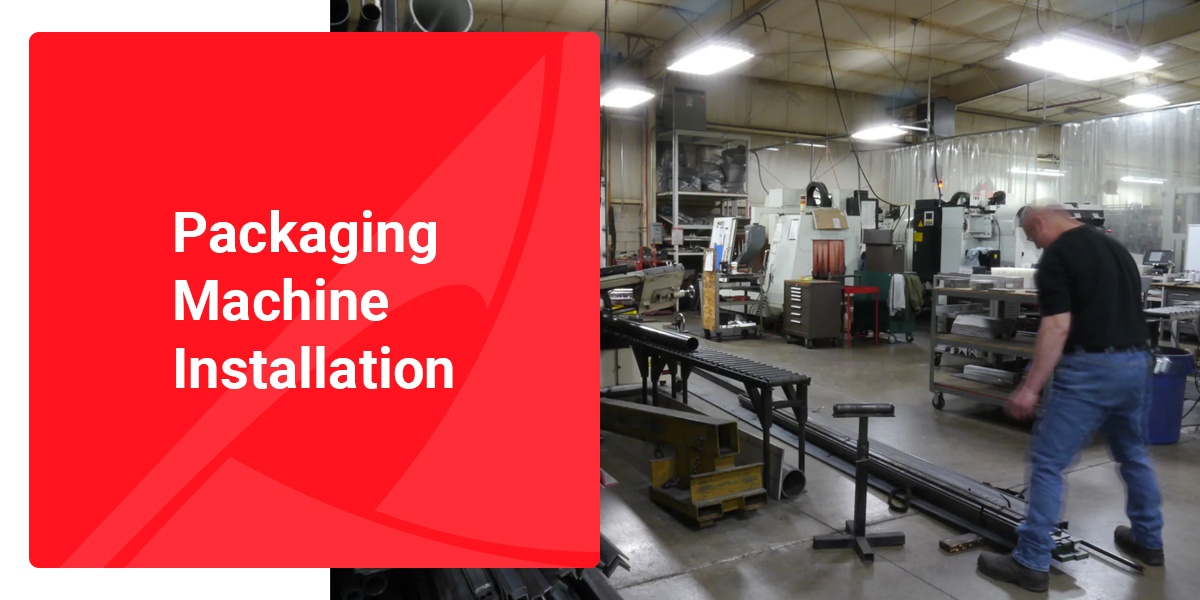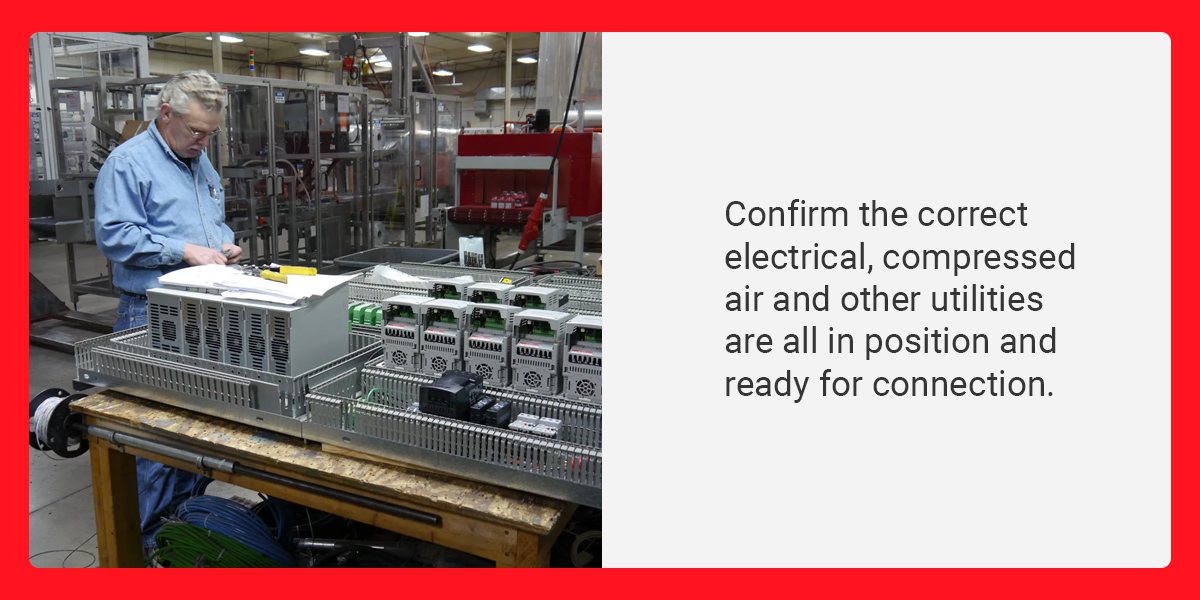10 June 2021 //
After preparing and planning for new equipment by issuing an RFP and reviewing multiple proposals, selecting a supplier and ordering the best packaging machine that will help you meet your manufacturing goals, it must successfully pass vendor acceptance testing, making it ready for delivery and installation.
Installing a new machine can present unforeseen challenges, whether into an existing production line or an entirely new line — especially without proper planning. However, you can reduce costly downtime and save labor costs by considering commonly overlooked issues to make a more efficient installation process.
1. Communication
To successfully install new equipment, you will need to communicate with everyone involved. Because the installation process involves internal and external teams, you will need to ensure you establish trustworthy and reliable modes of communication and determine standards for reaching out and receiving responses.
Before product delivery, keep all involved personnel aware of the equipment installation’s time, date and location. To best prepare individuals, alert them at least one full week in advance, so they have the opportunity to raise concerns and you have time to answer questions or solve problems.
To ensure a smooth installation process, you should regularly contact the provider. Being clear about expectations for delivery, shipping and installation can help reduce questions later. If you have hard deadlines you need them to help you meet, communicating your needs can help them better serve you. Delays are typical with installation services due to unforeseen circumstances. Staying in touch with your vendor can keep you updated in the event of a delay.
2. Safety Training
When you schedule time for safety training, you can ensure that vendor employees follow and meet your company’s safety standards to protect them and your company. Before the technician’s arrival, identify and communicate all necessary safety training. In some instances, this may require a technician to arrive the day before installation to complete all training and not delay machine installation.
Completing all safety training before your installation date can help keep you on schedule for receiving your new equipment. When technicians have already done the necessary training, they can begin their installation services right away for a smoother process with fewer delays.
3. Labor
Advise the supplier in advance of any labor agreements, like a union, that may affect the equipment’s smooth installation. In addition, talk with your technician and determine if they will require any assistance with the machine assembly.
4. Utilities
Confirm the correct electrical, compressed air and other utilities are all in position and ready for connection. It’s also critical to ensure a locally licensed person can complete the hookup. An EDL technician will not handle the utility connections, as license requirements and regulations vary significantly.
5. Machine Accessibility
When the technician arrives to complete the installation, do they have immediate access to the machine/installation area? Have teams cleared the floor? If you are integrating the new machine into an existing production line, is the line shut down? If you need to remove an existing machine for this project, is it powered down and the utilities disconnected? You can use your time and money more efficiently if the technician can get right to work when they arrive without waiting.
6. Unloading the Truck
Is a fork truck available and of sufficient size to accommodate the machine sections? It is also critical to check the path from the unloading dock to the installation location for any roadblocks, low ceilings or other tight fits. Determine who will be driving the fork truck. If this is the supplier’s responsibility, ensure all appropriate training, certifications and insurance are in place.
7. Up- and Downstream Equipment
Once the technician installs equipment, it will be critical to ensure all upstream and downstream equipment are online and ready to run. Likewise, any ancillary equipment, like scales, printers and labelers, affiliated with the new machine and secondary packaging should be ready to run to ensure startup and testing accuracy.
8. Test Product and Consumables
In addition to having associated equipment installed and running, a sufficient amount of product needs to be available for the machine’s startup and testing. This availability is even more critical if multiple products need to run as part of the equipment’s signoff and approval process. Also, order all consumable materials such as shrink film, corrugate trays or hot melt glue well in advance and have them in stock at the installation time.
9. Downtime
As you prepare for delivery and installation, you may need to shut down machines or production lines to safely and efficiently install equipment. When you determine how long and which machines you will need to turn off, you can put your communication skills to good use by sharing plans and expectations with other departments to let them know about downtime. Scheduling and communicating downtime expectations can ensure warehouses are ready to receive and install equipment when technicians arrive, so there are fewer delays.
While planning downtime, you can also work with other departments to schedule extra production to accommodate lost time and ensure you are still meeting company and quarterly quotas. Taking the time to calculate this will help your warehouse stay on track and allow you to better communicate these expectations with the right departments.
Install Your Next Packaging Equipment With EDL Packaging
Proper preparation is essential for creating a smooth and efficient equipment installation process. By implementing careful communication and planning, you can work with various departments to cut costs and quickly integrate equipment into your production lines.
At EDL Packaging, we create high-quality packaging equipment for several industries. We work our hardest to meet your needs — with custom-tailored equipment, we can best meet requirements specific to your business and products. Request a consultation with EDL Packaging to discover how we can help match your business with the best equipment and assist you through the installation process.



